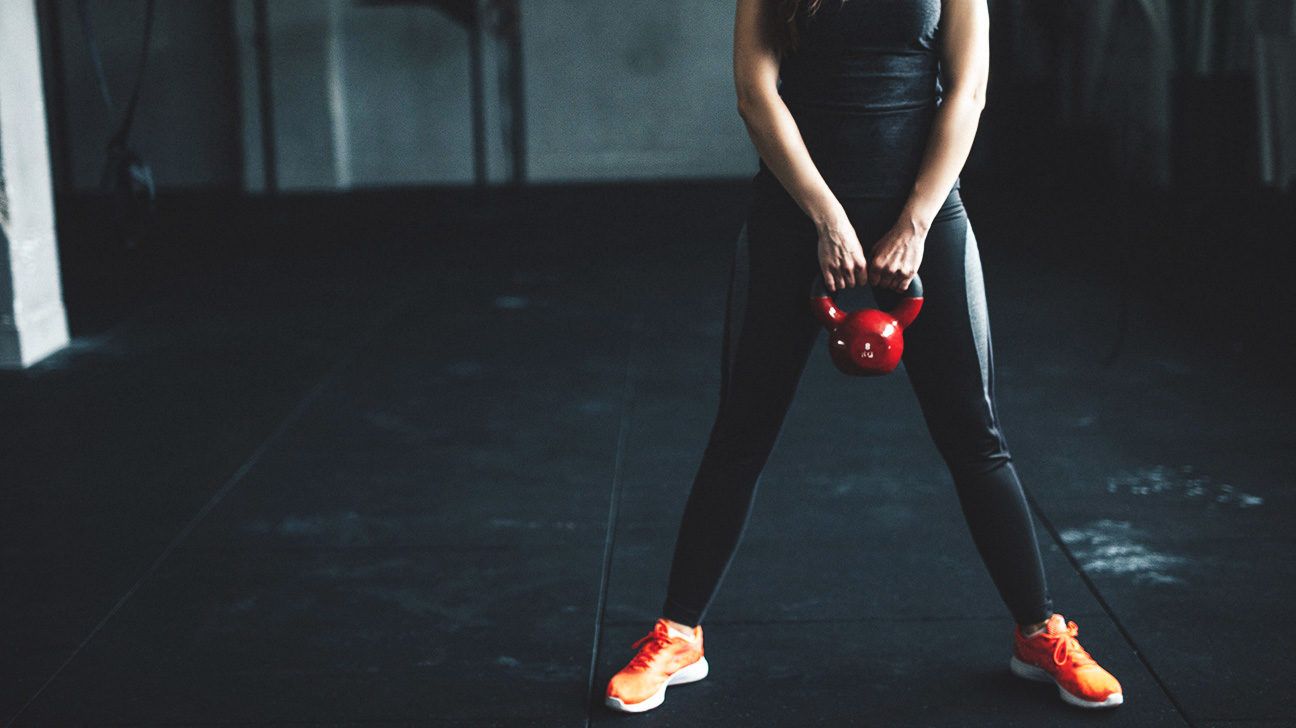Deadlifts have been a staple of strength training since the days when barbells were synonymous with mustachioed circus sideshow strongmen.
In simplest terms, a deadlift involves lifting a weighted barbell to waist height and putting it down again. There’s way more science for why it’s so damn effective as a strength training exercise (which we’ll delve into), but that’s the in-a-nutshell version.
Thing is, deadlifts are pretty intense. They provide an almost full-body workout that puts almost every muscle you own under great strain. This forces many people to look for alternatives — some that are gentler on the body overall while providing safer, less injury-inducing ways to match the effects of a deadlift.
Intrigued? We’ve rounded up the 10 best deadlift alternatives to swap into your workout.
Ready to get an (almost) full-body workout without having to combine the words “lift” and “dead”? Here are 10 tried and tested ways to do it. We recommend starting with 2–3 sets of 8–10 reps of each move.
1. Kettlebell swing
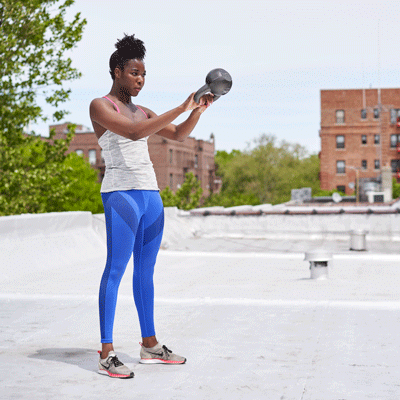
As the name suggests, you’ll need a kettlebell for this one. Many people anecdotally recommend kettlebell swings as the best deadlift alternative, but there’s no real science to back that up.
Kettlebell swings give you the same kind of intensive whole-body workout and incorporate a deadlift-like hip hinge movement. Like most other kettlebell exercises, they’re great for cardio and fat-burning too.
Here’s how you do them:
- Stand in front of the kettlebell with feet shoulder-width apart.
- Bend a little at the hips, gripping the kettlebell handle with both hands.
- Lift the kettlebell and swing it back between your legs.
- Drive your hips forward, letting the momentum carry the kettlebell until it’s level with your chest.
- Allow the kettlebell to fall, letting your hips hinge as it moves back between your legs.
Recommended: 2–3 sets of 8–12 reps
2. Cable pull-through
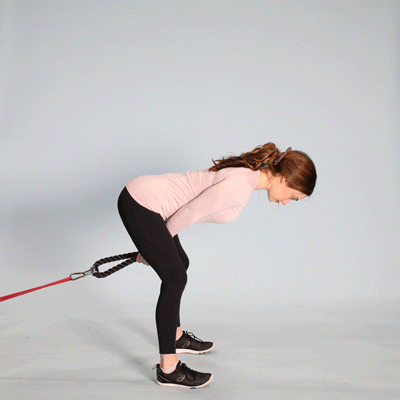
Cable pull-throughs are basically slow-motion kettlebell swings, but instead of using a kettlebell, you’ll be training with a low pulley machine. Again, this is a deadlift-like full-body exercise of the explosive variety.
Since the movement is slower, your muscles are active longer. This means cable pull-throughs are a great alternative if bulking specifically is your goal. In particular, this alternative works your glutes, hamstrings, and deep spine hella good.
Here’s how they’re done:
- Attach the rope handle to the low pulley machine and stand with your back to the machine and the handle between your legs.
- Standing with feet shoulder-width apart and legs slightly bent, push your hips back while you lean forward. Lean until you can’t lean any farther without rounding your lower back.
- Stand, thrusting your hips forward as you do and pulling the rope handle with you.
- Lean forward again to repeat. Be sure to give those hamstrings and glutes a squeeze between reps and make those movements slow and controlled.
3. Bent-over row
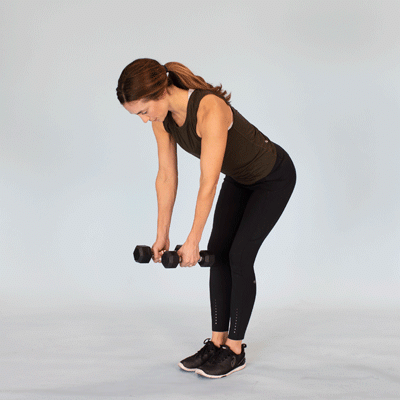
If you’re not feeling barbells today, you can hit the dumbbells to get the same heavy arm, core, trap, lat, and rhomboid workout as on deadlift day.
Bent-over rows are particularly good for back strengthening, something many people turn to deadlifting for.
Here’s how to bent-over row like a pro:
- Holding a dumbbell in each hand, bend at your waist to 45 degrees. Be sure to keep your arms extended, knees soft, and spine neutral.
- Bring your elbows up behind you, like you’re doing the chicken dance.
- Once they’re all the way up, squeeze your shoulder blades. Pause.
- Lower your elbows back to the starting position. Repeat for as many reps as needed.
4. Back extension
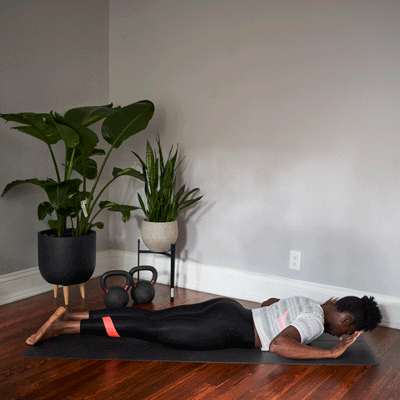
Back extensions provide a deadlift-like workout with no weights in sight.
They’re a great way to engage your lower back muscles, glutes, and hamstrings. Plenty of hip-hinging is still involved too.
Here’s how you hyperextend that back:
- Lie facedown on the floor (or a mat, exercise ball, or workout bench).
- Place your hands on either side of your head, palms facing down.
- Using your lower back and quads, raise your upper body. Once you feel it in these muscles, stop (you don’t want to cause yourself any strain).
- Pause, lower yourself back down, and repeat for as many reps as needed.
5. Single-leg Romanian deadlift
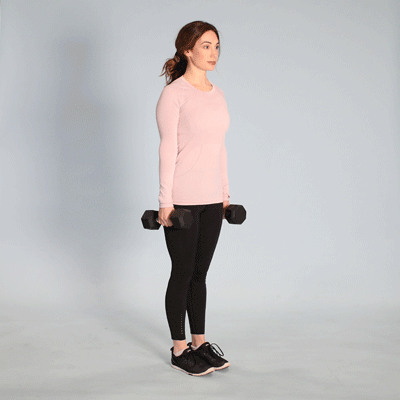
OK, so we’ve bent our rule on not using the words “dead” and “lift” together. We don’t care, though, because single-leg Romanian deadlifts are a balance-boosting, back-friendly alternative to the regular double-leg not-Romanian kind.
This is one of the gentlest alternatives on our list, so it’s great if you need to take your gym time easier while you recover from an injury.
Here’s how to deadlift single-leg Romanian style:
- Stand with your back straight and eyes straight ahead, holding a dumbbell in each hand.
- Place your weight on your right leg and start hinging at the waist. Keep that right knee relaxed.
- Hinge fully forward, bringing your head down and extending your left leg behind you until your body forms a T shape. Keep that left leg straight throughout.
- Keep your hips square and those core and chest muscles engaged. Let the dumbbells hang from your arms.
- Hold, then return to the starting position. Repeat for as many reps as you need before switching to the other leg.
6. Farmer’s walk/farmer’s carry
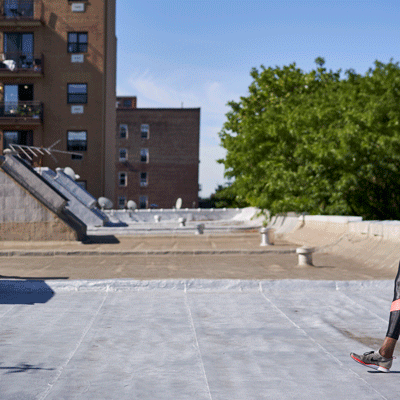
The farmer’s walk/farmer’s carry is one of the best-kept secrets in strength training. You can do it with dumbbells, kettlebells, or even heavy shopping bags! We recommend the first two, though.
Farmer’s walking is, in no uncertain terms, walking while holding heavy objects. Super simple and super effective. It works your shoulders, upper body, and core but puts way less pressure on your lower back than deadlifting.
Here’s how to farmer’s walk like an agricultural deity:
- Stand with feet shoulder-width apart, gripping a dumbbell/kettlebell in each hand by your sides.
- If you’re in the gym, walk forward as many steps as possible before turning and repeating. You can also do this outside — in that case, walk forward for 30–60 seconds.
- Repeat as many gym-lengths or 30–60-second farmer’s walks as needed. Be sure to keep those core and shoulder muscles engaged as you go.
7. Good morning with dumbbells
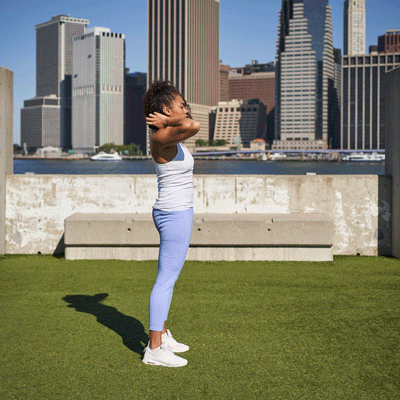
If it feels counterintuitive to include a weight-bearing exercise that seems to be more challenging than deadlifts, hold those horses. Good mornings are on our list because you don’t need to grip the weights while you do them.
Grip strength is critical for deadlifts, so if you’re a barbell bunny wanting to rest your hands without cutting the rest of your body any slack, good mornings are exactly what you need.
Good mornings go like this:
- Rest your dumbbells on your shoulders, like you’re about to bust a squat.
- Stand with feet between shoulder- and hip-width apart. Bend your knees slightly and be sure to keep them engaged throughout the movement.
- Lean forward as far as you can without rounding your lower back. Hinge at your hips, keeping those core and lower back muscles firm.
- Once you’ve lowered as far as you can while keeping a straight back, raise yourself back up until you’re standing. Repeat as needed.
8. Glute bridge and barbell hip thrust
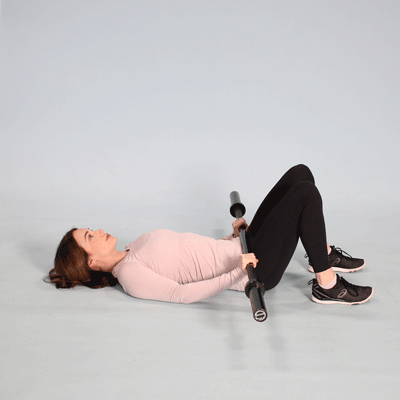
Two exercises in one entry? Yeah, it’s cheating a little, but since a barbell hip thrust is just a glute bridge with a barbell, we felt it was cheeky to include them separately.
Glute bridges are a great entry-level exercise for building the muscles you’ll need in a deadlift. If you’ve had a recent injury, they’re perfect for keeping your posterior chain muscles active without straining them.
Unless you’re a total strength training newbie, you’ll know the benefits of adding extra weight with a barbell hip thrust. Weight adds resistance. More resistance = more exercise.
The below steps are for glute bridges. For barbell hip thrusts, do the exact same thing while holding a barbell laterally across your hips:
- Lie faceup with knees bent and feet flat on the floor. Keep your arms by your sides.
- While inhaling, push up with all points of your feet. Keep your core, glutes, and hamstrings engaged. Let this lift your hips toward the ceiling.
- Once hips are fully lifted, hold.
- Release those engaged muscles and lower yourself back to the starting position. Then do it again and again until your body feels deadlift-level worked.
9. Pistol squat

For a totally weight-free alternative, pistol squats are an advanced exercise that strengthens your posterior chain while building your flexibility and balance.
Pistol squats are particularly popular among yoga enthusiasts because they train both muscular strength and coordination. Since no bells — kettle, dumb, or bar — are needed, pistol squats are much gentler than deadlifts while targeting the same muscle groups.
Here’s how to pistol squat:
- Stand on your right leg, placing your weight on it. Lift left leg in front of you a little. If you’re a beginner, you can hold on to a wall or use a chair for support.
- Leading with your hips, sag your butt back toward the floor while keeping right knee and chest sturdy, stable, and solid.
- Bring all the junk in that trunk as close to the floor as you can, stopping if and when your thigh becomes parallel with the floor.
- Raise yourself gently up to standing position. Repeat as many times as needed before switching to the other leg.
10. Trap bar deadlift
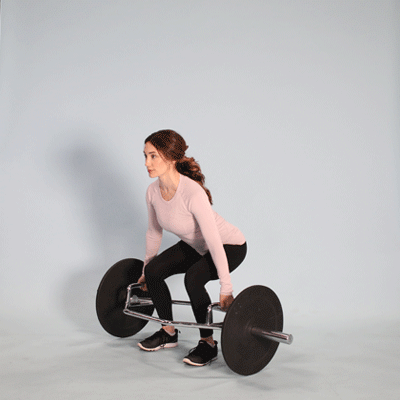
If you have access to a trap bar, this deadlift variation brings all the benefits of a barbell deadlift with significantly less lower back strain.
A trap bar is a hexagonal frame. You stand in the center of the frame and lift. This keeps the weight in line with your feet, rather than in front of you like a barbell. If lower back pain is keeping you from your deadlift goals and you want as close to the genuine article as possible, trap bar deadlifts are the alternative for you.
Here’s how to deadlift with a trap bar:
- With your weights loaded, stand inside the bar with feet between hip- and shoulder-width apart.
- Squat and grab the trap bar handles tightly. Keep hips low, chest lifted, lower back straight, and abs braced.
- With arms straight, push into the floor with your feet. This will make you stand. Let it.
- Once standing, bend your legs and lower the weight back to the floor. You already know the next bit: Repeat, repeat, repeat.
Since we’ve covered the alternatives, let’s talk about why bulk seekers love deadlifts so much. There are loads of reasons, actually.
Deadlifting hits a huge number of muscle groups. It’s one of the easiest ways to strengthen pretty much your whole body at once. However, after a solid deadlift sesh, you’ll mainly feel it in your:
In particular, deadlifts are one of the best ways to flex those hip extensors. They’re even better for this than squats, and there’s science to back that up. Strength trainers aren’t the only ones who can make gains from deadlifting, though.
As this 2020 literature review notes, deadlifting and other types of resistance training carry numerous health benefits like “improving cardiovascular health, enhancing mental health and increasing bone mineral density.” According to various studies, like this one from back in 2015, light deadlifts are a physical therapist go-to for back pain.
So, all in all, there are a lot of reasons to lift that barbell.
The main drawback of deadlifts? If you don’t do them properly, you can deadlift yourself straight into an ambulance. We’re not joking. Gruesome deadlifting injuries are so common that there are compilations on YouTube.
Deadlifting (or any resistance training) involves moving heavy weights. And the longer-term deadlift problems warrant a deeper look.
Some studies have indicated that repetitive heavy deadlifts can cause lower back pain after a few years. Deadlifting puts strain on almost your entire body. But the most common muscle injuries are ruptured pecs, according to this 2018 review.
Since they’re so intense, attempting them when you’re recovering from an injury can be super dangerous (even if you have perfect technique). Good thing you’re reading a list of deadlift alternatives then, eh?
Proper technique is the most important step for injury prevention in any resistance training.
When doing deadlifts or any close alternative, this means:
- Keep your torso upright and shoulder blades locked.
- Don’t pull with your back when you lift, but push against the floor with your feet and legs.
- Make sure the bar stays close to your body. This prevents your upper back from being overloaded and ensures power is created in your lower back and hips.
- Don’t extend your knees prematurely. If you do, it’ll knock your torso from being upright.
- A neutral head is super important. Don’t look around while you lift. Doing any type of weightlifting when your head is turned is basically inviting a neck injury.
A more general way to help prevent injury when doing any exercise is to make sure you’re hydrated and that you’re not exercising while fatigued. It’s much safer to do resistance training exercises like deadlifts at the start of your workout. If you’re lifting heavy weights, having a spotter is super important too.
Oh, and the golden rule? If you’re feeling pain, STOP. Feeling the burn is one thing, but deadlifting (or doing any of the alternatives on this list) shouldn’t hurt. The time between “Ouch, my back smarts a little” and you collapsed on the floor with shattered vertebrae can be much shorter than you realize.
Most people may not need a pro to step in and help with their deadlifting. Same goes for our 10 alternatives. However, if you’re trying to push your body to its upper strength/endurance limits, you won’t settle for getting anything less than the absolute maximum from your workout.
Working with a personal trainer or fitness pro is mandatory if that last sentence left you feeling personally attacked. They’ll help you perfect your technique and push yourself much further than you could manage alone.
You’ll need to work with a pro, such as a physical therapist, if you’re trying to deadlift yourself out of an injury (or if an injury’s keeping you from deadlifting). Resistance training can turn small injuries into big problems if not approached correctly.
If you’re exercising to get back into fighting shape after life has set your body back a bit, consulting a health professional isn’t just recommended, it’s essential.
Deadlifts are a mainstay of resistance training. They target muscle groups throughout your body and are nearly unmatched as a strength-increasing, bulk-building exercise. However, they also put a lot of strain on your body, especially your lower back.
There are loads of alternatives you can include in your workout that require lighter, more manageable equipment or no equipment at all. Many deadlift alternatives are also gentler on specific areas of your body while targeting the same muscles to meet your goals.
All in all, while deadlifts dominate many workout routines, they’re by no means irreplaceable.

